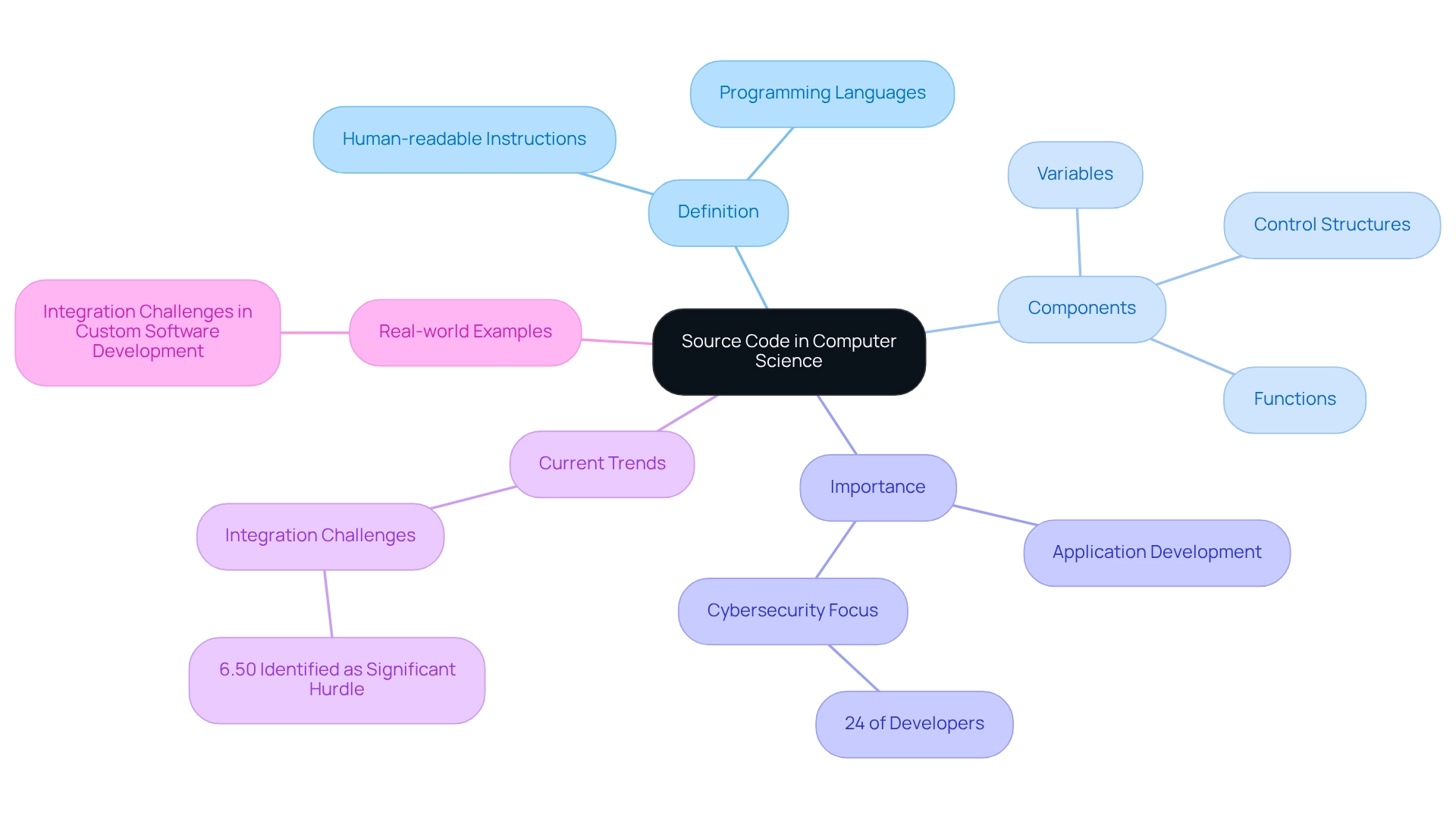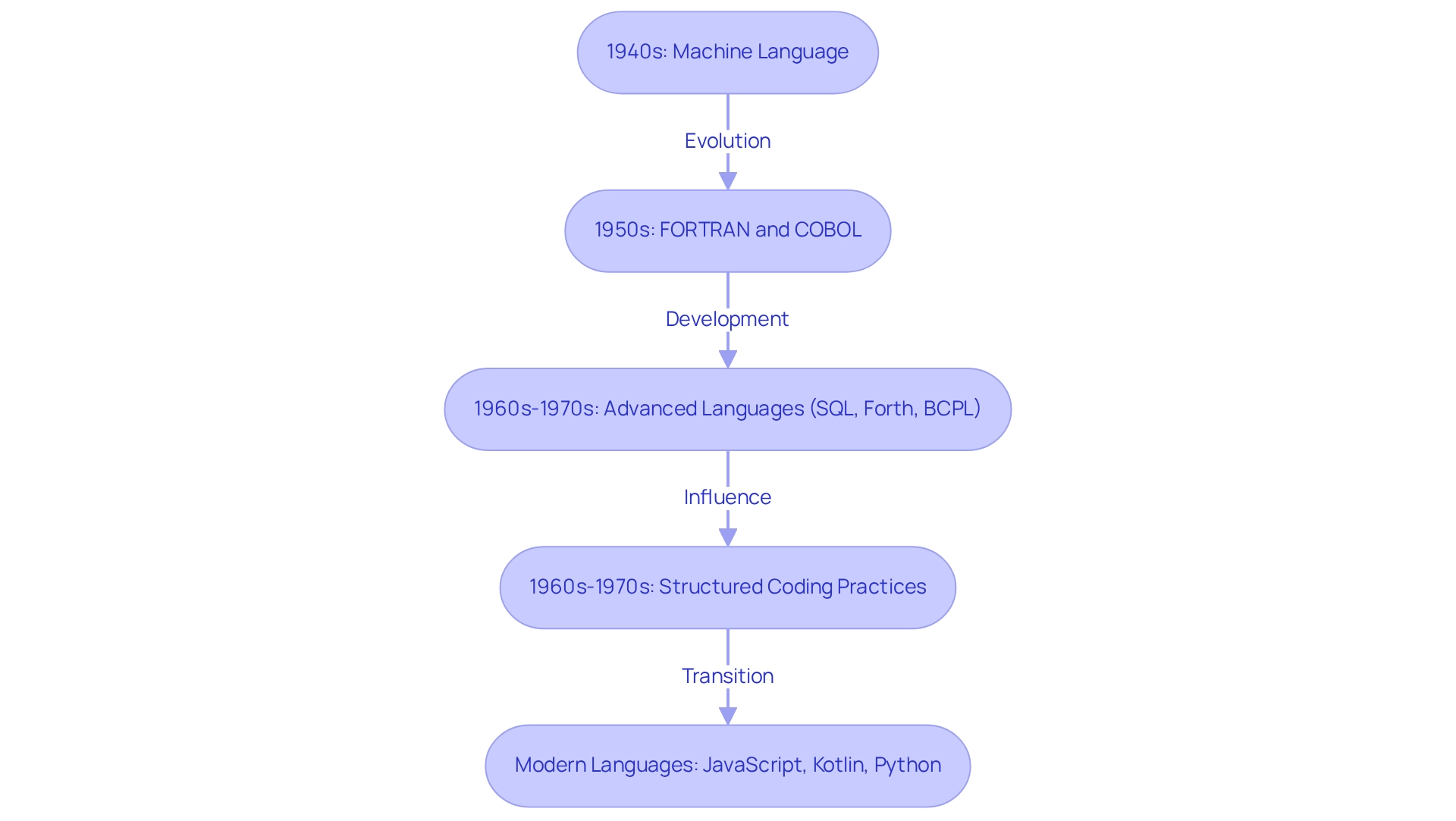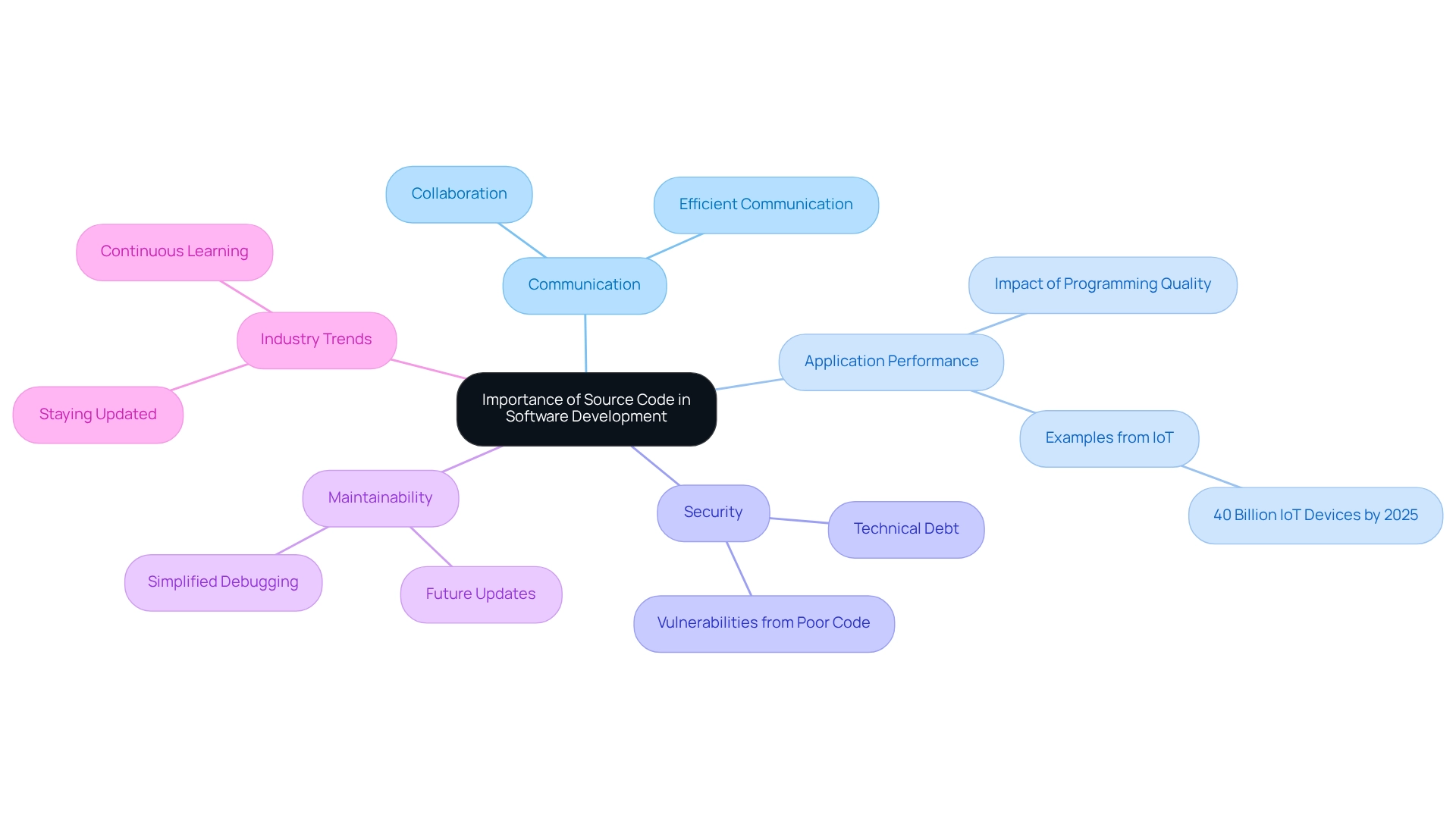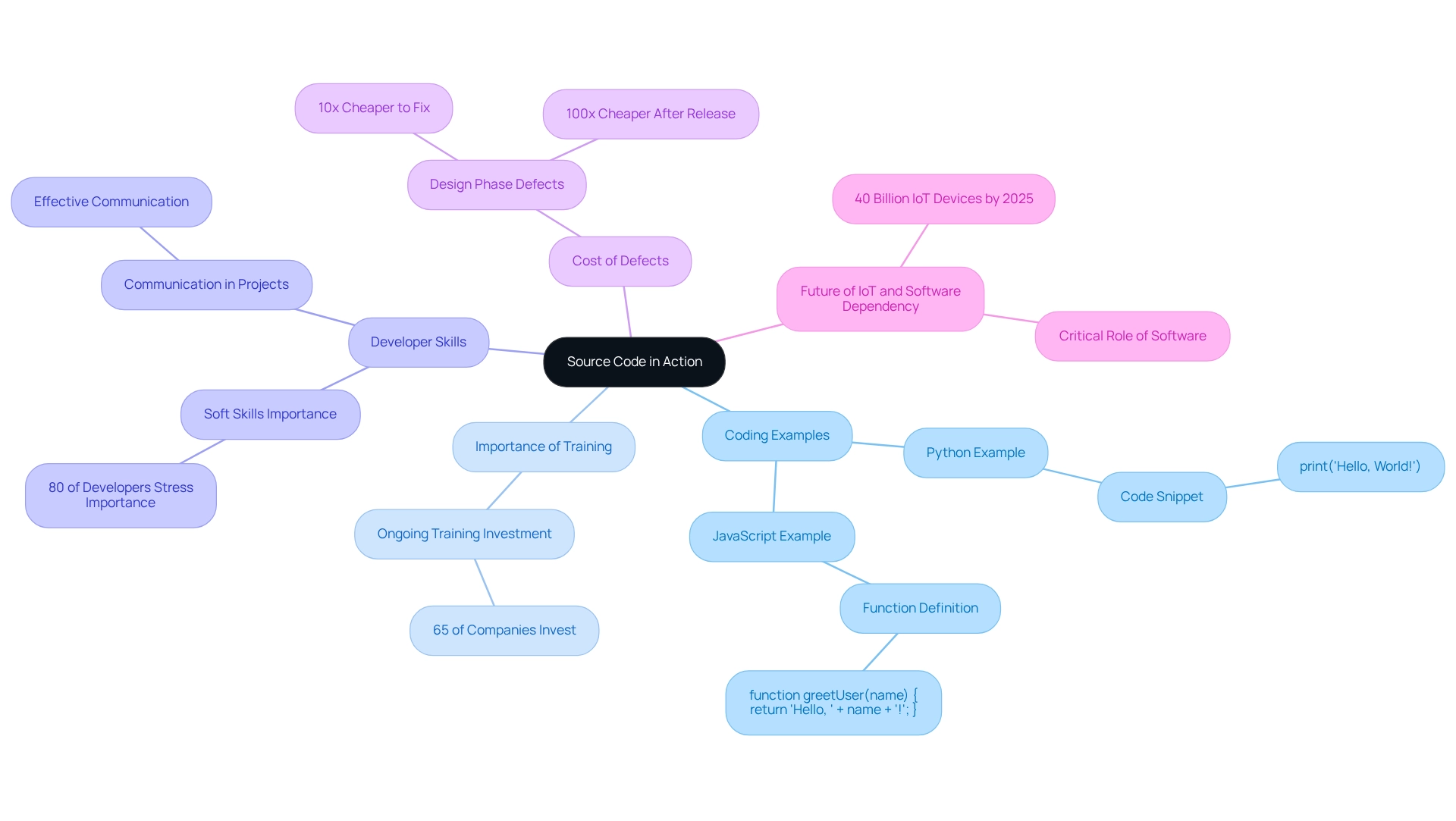Overview
In the ever-evolving landscape of software development, developers face numerous coding challenges. How can they streamline their processes and enhance their coding efficiency? Kodezi emerges as a powerful solution, offering features designed to address these very challenges. By utilizing Kodezi, developers can experience significant improvements in productivity and code quality.
The benefits of Kodezi are compelling. With its user-friendly interface and robust tools, developers can organize their source code more effectively, leading to enhanced application performance, security, and maintainability. Furthermore, Kodezi’s innovative features help trace the evolution of coding practices, from early machine languages to modern integrated development environments.
Are you ready to elevate your coding practices? Explore the tools available on the Kodezi platform and discover how they can transform your software development experience. By embracing Kodezi, you not only improve your coding efficiency but also ensure that your applications are built on a solid foundation of well-organized source code.
Introduction
In the realm of computer science, source code stands as a vital blueprint, empowering developers to create software applications capable of performing a myriad of tasks. It transforms intricate logic into human-readable instructions, laying the groundwork for digital innovation. As technology continues to advance, the evolution of source code reflects not only the history of programming languages but also the growing importance of code quality in ensuring software security and performance.
With the increasing reliance on interconnected devices in the Internet of Things era, understanding the significance of source code has never been more critical. This exploration delves into the definition, historical context, and practical implications of source code, shedding light on its indispensable role in shaping the future of software development.
Define Source Code in Computer Science
In computer science, the source code definition describes the human-readable set of instructions created by developers using specific programming languages. This foundational blueprint for software applications serves as a source code definition that outlines the logic and functionality that the program will execute. Typically stored in simple text files, programming scripts can be compiled or interpreted to create executable applications. This program encompasses various components, including functions, variables, and control structures, which collaboratively execute designated tasks.
Comprehending the underlying scripts is essential for application development, as it supports all programming tasks. Notably, 24% of developers are currently focusing on cybersecurity solutions, emphasizing the growing importance of secure and well-documented programming in today's digital landscape. Furthermore, as Ken Olsen wisely remarked, quality hardware results in improved software, highlighting that robust programming is crucial for efficient software performance.
Real-world examples, such as the integration challenges faced by development companies—where 6.50% of respondents identified integration complexities as a significant hurdle—underscore the necessity for tailored solutions and skilled teams to effectively manage diverse technological environments. In addition, how do you ensure your programming practices are up to date with these evolving challenges? Exploring tools like Kodezi can significantly enhance productivity and code quality, addressing the pressing needs of modern developers.

Trace the History and Evolution of Source Code
The history of programming traces its roots back to the nascent days of computing in the 1940s, when applications were crafted in machine language—a binary format that poses significant challenges for human interpretation. With the advent of coding languages like FORTRAN and COBOL in the 1950s, text became more accessible and simpler to generate. The rise of advanced computing languages empowered developers to write instructions in a more human-readable format, greatly enhancing productivity.
Over the decades, the evolution of source material has been characterized by the emergence of integrated development environments (IDEs), version control systems, and open-source software, which have fundamentally transformed how developers create, share, and collaborate on their work. Noteworthy coding languages developed in the 1960s and 1970s, such as SQL, Forth, and BCPL, further enriched the development landscape.
The structured coding discourse of the 1960s and 1970s underscored the importance of clear coding practices, leading to the creation of languages that adhered to structured design principles, thereby enhancing readability and maintainability. This dialogue highlighted the ongoing need for improved coding practices, which continues to shape coding languages today. For instance, nearly half, or 47%, of C developers regularly utilize the C99 version, illustrating the persistent evolution and adaptation of languages to meet developer needs.
Today, written instructions are not merely a fundamental aspect of application development; they also represent a cultural artifact that reflects the creativity and problem-solving abilities of programmers throughout history. The continuous evolution of coding languages, as outlined in the source code definition computer science, significantly influences how written material is generated and understood, with languages like JavaScript at the forefront of cross-platform mobile app development, followed by Kotlin, C++, Python, Swift, and Objective-C for various applications. This dynamic environment emphasizes the importance of understanding the historical context and evolution of source code definition computer science in the ever-evolving realm of application development. Moreover, for a programming language to be considered for the TIOBE index, it must achieve more than 5,000 hits for '+ programming' on Google, highlighting the competitive nature of programming languages in the industry.

Explain the Importance of Source Code in Software Development
The source code definition in computer science explains that source text is the cornerstone of application development, serving as the main medium through which developers communicate their ideas to computers. It enables the creation of applications capable of executing a wide range of tasks, from basic calculations to complex data processing. The quality of the original programming is crucial, as it directly affects application performance, security, and maintainability. Well-organized and refined programming not only improves collaboration among developers but also simplifies debugging procedures and facilitates future updates or alterations.
Furthermore, the importance of programming quality extends to application security; vulnerabilities often emerge from inadequately written scripts. In fact, a staggering 76% of developers believe that navigating development challenges hinges on continuous learning, adaptive methodologies, and efficient communication. This emphasizes the importance for developers to remain aware of industry trends and best practices.
Practical examples illustrate the effect of program quality on application performance. For example, as the Internet of Things (IoT) keeps growing—expected to include over 40 billion devices by 2025—the dependence on strong technological solutions becomes more essential. High-quality programming is crucial for managing and operating these interconnected devices efficiently. In a time when applications are fundamental to nearly every aspect of contemporary life, the significance of high-quality programming cannot be exaggerated.
As Adam Tornhill wisely observed, offering metrics that measure wasted time enables development organizations to recognize the importance of minimizing technical debt and improving software quality. Ultimately, emphasizing the source code definition in computer science is not just a best practice; it is essential for ensuring the security and performance of applications in today's rapidly evolving technological landscape.

Provide Examples of Source Code in Action
Source text is integral to virtually every software application, serving as the foundation for functionality and user interaction. Have you ever considered how a simple 'Hello, World!' program in Python can illustrate the basic principles of coding? For instance:
print('Hello, World!')
This straightforward script instructs the computer to display the text 'Hello, World!' on the screen. In a more complex scenario, consider a web application utilizing JavaScript:
function greetUser(name) {
return 'Hello, ' + name + '!';
}
Here, the JavaScript script defines a function that accepts a user's name as input and returns a personalized greeting. These examples not only illustrate how source scripts convert human reasoning into executable instructions but also highlight the flexibility of programming languages in creating functional software, demonstrating the source code definition in computer science.
Furthermore, the significance of efficient source management is underscored by the fact that 65% of companies invest in ongoing training programs for developers to adjust to technological changes. In addition, as the technology landscape evolves, the ability to communicate effectively about code becomes increasingly vital; 80% of developers emphasize the importance of soft skills in addressing project-related challenges. This is particularly relevant in the context of the Internet of Things (IoT), where it is projected that by 2025, over 40 billion IoT devices will rely on sophisticated software, necessitating seamless integration and functionality.

Conclusion
The exploration of source code in computer science reveals its critical role as the foundation of software development. Have you ever faced challenges with coding that hinder your productivity? Defined as the human-readable set of instructions that programmers create, source code transforms complex logic into executable programs. Kodezi addresses these challenges by streamlining the coding process, making it easier for developers to focus on creating high-quality software. Its evolution from early machine code to high-level languages has significantly enhanced accessibility and productivity for developers, underscoring the importance of adopting best practices to ensure code quality.
In today’s digital landscape, the significance of well-structured source code cannot be overstated. It directly impacts software performance, security, and maintainability. As the Internet of Things continues to expand, the demand for robust and secure software solutions becomes increasingly crucial. The necessity for continuous learning and adaptation among developers is paramount. Kodezi offers tools that help developers improve their coding practices, ensuring that vulnerabilities stemming from poorly written code are minimized.
Real-world examples demonstrate how source code is the backbone of every software application, from simple scripts to complex web applications. The emphasis on effective source code management reflects the industry's recognition of its value. Many companies invest in training programs to keep developers adept at handling technological changes, and Kodezi is at the forefront of this movement. Ultimately, understanding the evolution and importance of source code is essential for navigating the future of software development. Are you ready to explore the tools available on Kodezi and enhance your coding journey? Remember, it shapes the way technology will continue to evolve and integrate into our lives.
Frequently Asked Questions
What is source code in computer science?
Source code refers to the human-readable set of instructions created by developers using specific programming languages, serving as a foundational blueprint for software applications.
How is source code typically stored?
Source code is typically stored in simple text files.
What components are included in a program's source code?
A program's source code includes various components such as functions, variables, and control structures that collaboratively execute designated tasks.
Why is understanding source code important for application development?
Comprehending the underlying scripts is essential for application development as it supports all programming tasks.
What percentage of developers are focusing on cybersecurity solutions?
Currently, 24% of developers are focusing on cybersecurity solutions, highlighting the importance of secure and well-documented programming.
What did Ken Olsen emphasize about hardware and software?
Ken Olsen emphasized that quality hardware results in improved software, indicating that robust programming is crucial for efficient software performance.
What challenges do development companies face regarding integration?
Development companies face integration challenges, with 6.50% of respondents identifying integration complexities as a significant hurdle.
How can developers ensure their programming practices are up to date?
Developers can explore tools like Kodezi to enhance productivity and code quality, addressing modern challenges in programming.




